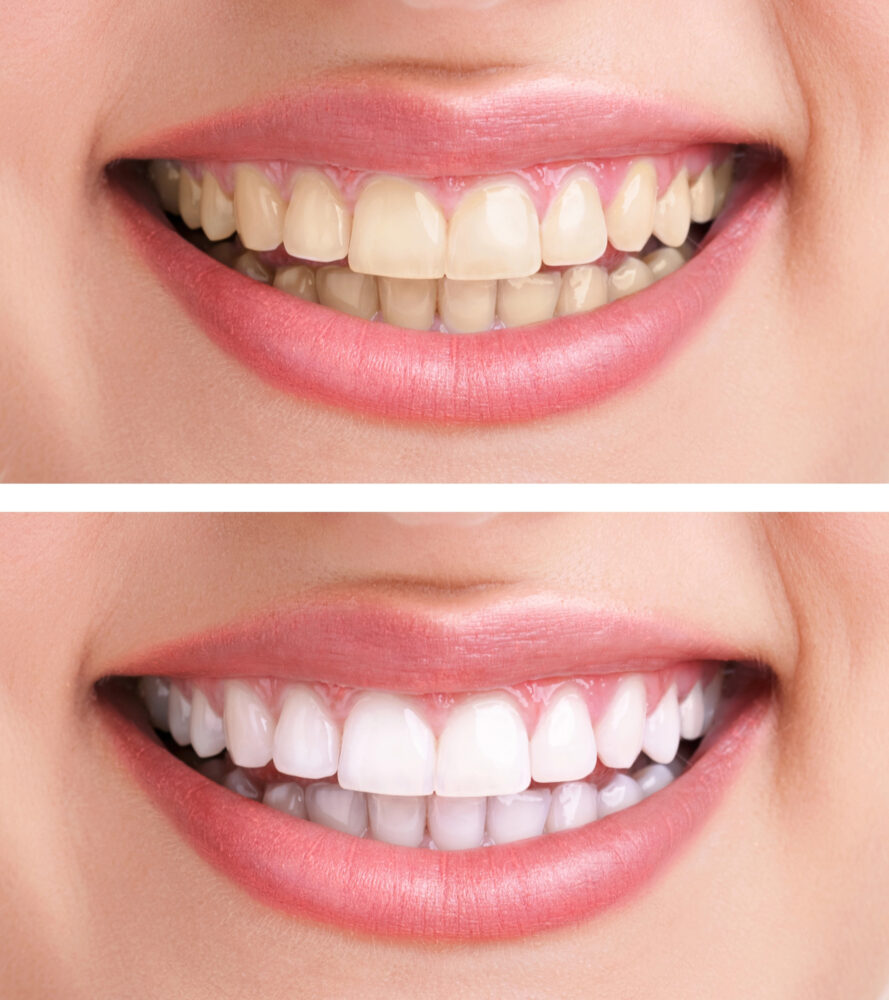Porcelain Dental Veneers: Benefits & Risks
Introduction
When it comes to improving tooth aesthetics, dental veneers affix rapidly and offer a multitude of benefits. Porcelain dental veneers have gained popularity in recent years, thanks to their ability to enhance smiles and provide a natural-looking appearance. However, like any dental procedure, there are both benefits and risks to consider. In this article, we will explore the advantages of porcelain dental veneers and the potential drawbacks associated with this cosmetic dentistry treatment.
Porcelain Dental Veneers: An Overview
Before diving into the benefits and risks, let’s first understand and take an overview of what porcelain dental veneers are. Veneers are ultra-thin shells, typically made of porcelain, that are custom-made to fit over the front surface of your teeth. They are designed to improve the appearance of teeth that are discolored, chipped, misaligned, or have gaps between them.
Porcelain veneers are preferred by many because they closely resemble natural teeth in terms of color and texture. They offer a long-lasting solution to enhance the smile and boost confidence. Now, let’s explore the benefits and risks associated with this popular cosmetic dental treatment.
Benefits of Porcelain Dental Veneers
- Enhanced Aesthetics and Natural Appearance
Porcelain dental veneers are highly regarded for their ability to create a beautiful smile. They can effectively mask various dental imperfections, including stains, chips, and gaps. The translucent properties of porcelain give veneers a lifelike appearance, making them indistinguishable from natural teeth. By improving tooth aesthetics, dental veneers have the power to transform your smile and boost your self-esteem.
- Stain Resistance
Unlike natural teeth, porcelain veneers are highly resistant to staining. This means you can enjoy your favorite foods and beverages without worrying about discoloration. However, it’s important to note that while veneers themselves are stain-resistant, the underlying tooth structure can still be susceptible to staining. It’s advisable to minimize the consumption of foods and drinks that cause staining to maintain the longevity of your veneers.
- Durability
Porcelain dental veneers are known for their durability. With proper care and maintenance, they can last for 10-15 years or even longer. The strong and resilient nature of porcelain allows veneers to withstand normal biting and chewing forces. By opting for veneers, you can enjoy a long-lasting solution to improve your smile.
- Minimal Tooth Alteration
Compared to other dental treatments, porcelain veneers require minimal tooth alteration. In most cases, only a small amount of enamel needs to be removed from the front surface of the tooth to accommodate the veneer. This means that the natural tooth structure is preserved to a greater extent, making veneers a conservative option for improving tooth aesthetics as dental veneers affix rapidly.
Risks and Considerations of Porcelain Dental Veneers
- Irreversibility
It’s important to understand that porcelain veneers are an irreversible treatment. Once the enamel is removed and the veneers are bonded to the teeth, the process cannot be reversed. This means that you will need to commit to the maintenance and replacement of veneers over time. It’s essential to discuss this aspect thoroughly with your dentist before proceeding with the treatment.
- Sensitivity
Some individuals may experience temporary tooth sensitivity after getting porcelain veneers. This sensitivity is usually mild and subsides on its own within a few days or weeks. However, in rare cases, individuals may experience prolonged or increased sensitivity. If you have a history of tooth sensitivity, it’s crucial to discuss it with your dentist beforehand.
- Potential Damage
While porcelain veneers are durable, they are not indestructible. Certain habits, such as biting on hard objects such as ice or using your teeth as tools, can potentially damage or chip the veneers. It’s important to avoid such habits and be mindful of how you treat your veneers to ensure their longevity.
- Cost
Another consideration when it comes to porcelain dental veneers is the cost. Veneers are typically considered a cosmetic procedure and may not be covered by dental insurance. The cost can vary depending on factors such as the number of veneers needed and the complexity of the case. It’s essential to discuss the financial aspect with your dentist and explore any available payment options or dental financing plans.
Conclusion
Porcelain dental veneers offer numerous benefits for those seeking to enhance their smile and improve tooth aesthetics. They provide a natural-looking appearance, stain resistance, durability, and minimal tooth alteration. However, it’s important to consider the potential risks and considerations associated with porcelain veneers, such as irreversibility, sensitivity, potential damage, and cost.
If you’re considering porcelain dental veneers, consult with a reputable cosmetic dentist who can assess your individual case and provide guidance tailored to your needs. Remember, when it comes to dental veneers and ensuring the best possible outcome for your smile, cosmetic dentists know how to promote their benefits.
By understanding the benefits and risks associated with porcelain dental veneers, you can make an informed decision and achieve the smile transformation you desire. A beautiful smile can have a significant impact on your self-confidence and overall well-being, and porcelain veneers can be a valuable tool in achieving that radiant smile you’ve always dreamed of.
Read also: The Best Midwestern States, Ranked
FAQs about Porcelain Dental Veneers
- Are porcelain dental veneers painful to get?
No, the process of getting porcelain dental veneers is not painful. Your dentist will use local anesthesia to ensure your comfort during the procedure. However, some individuals may experience minor discomfort or sensitivity after the anesthesia wears off. This is usually temporary and can be managed with over-the-counter pain relievers.
- How long does it take to get porcelain dental veneers?
The process of getting porcelain dental veneers usually requires two or three dental visits. During the first visit, your dentist will prepare your teeth, take impressions, and discuss the desired outcome. The impressions are then sent to a dental laboratory for the fabrication of your custom veneers. In the subsequent visit(s), the veneers will be bonded to your teeth, ensuring a precise fit and natural appearance.
- Can I still eat normally with porcelain dental veneers?
Yes, you can eat normally with porcelain dental veneers. Porcelain veneers are designed to be strong and durable, allowing you to enjoy a wide range of foods. However, it’s important to exercise caution when biting into hard or sticky foods that can potentially damage the veneers. It’s advisable to avoid biting on ice, hard candies, or using your teeth as tools to open packages.
- How do I care for porcelain dental veneers?
Caring for porcelain dental veneers is similar to caring for natural teeth. You should continue to practice good oral hygiene by brushing your teeth twice a day, flossing daily, and visiting your dentist for regular check-ups and cleanings. Avoid using abrasive toothpaste or a hard-bristled toothbrush, as these can potentially scratch the surface of the veneers. Additionally, it’s important to avoid habits such as teeth grinding or clenching, as these can put excessive pressure on the veneers and cause damage.
- Can porcelain dental veneers be whitened?
No, once porcelain dental veneers are fabricated and bonded to your teeth, they cannot be whitened. If you’re considering teeth whitening, it’s best to discuss this with your dentist before getting veneers. Your dentist can recommend the appropriate shade for your veneers, taking into account your desired tooth color and overall smile aesthetics.
- Are porcelain dental veneers reversible?
No, porcelain dental veneers are not reversible. As mentioned earlier, a small amount of enamel is typically removed from the front surface of the tooth to accommodate the veneers. This process is irreversible, and once the veneers are bonded, they cannot be removed without replacing them. It’s important to carefully consider the decision to get porcelain veneers and discuss any concerns or questions with your dentist beforehand.


